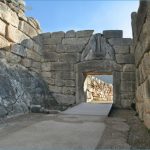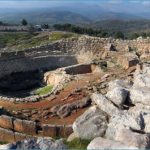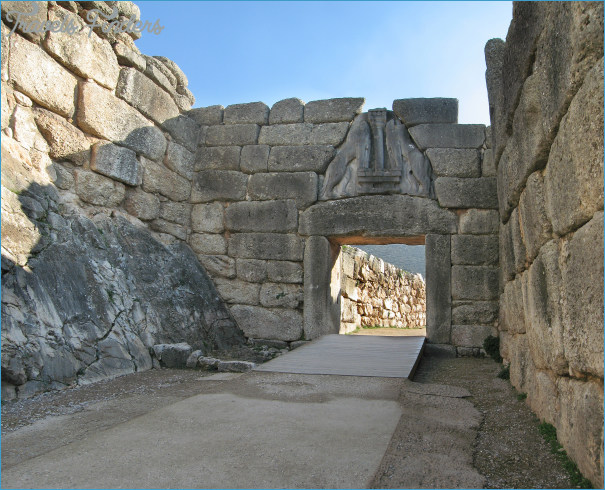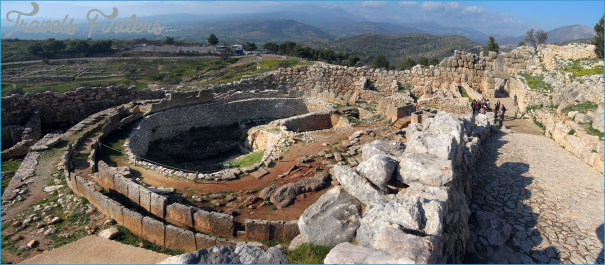The spilling of kindred blood flows back through Mycenae’s past to its foundation. When Perseus accidentally killed his grandfather King Acrisius of Argos, he was loath to claim the throne as was his due. Instead he exchanged kingdoms with Megapenthes, ruler of nearby Tiryns. Included in his new lands was the stony outcrop of Mycenae, at the head of a fertile plain flanked by tall hills south of the Dervenaki Pass. Seeing its strategic potential, Perseus enlisted Cyclopes to build its massive walls (or so locals, marvelling at the enormous stones, told Pausanias).
The Foundation of Mycenae Photo Gallery
But Perseus and Megapenthes quarrelled, and Perseus was killed. His death heralded a period of instability. Mycenae was attacked, its cattle stolen, and only through guile could Perseus’ grandson, Amphitryon, defeat the raiders, islanders from far-off Taphos in the Ionian Sea. Still disaster dogged the royal household. When Amphitryon accidentally killed Mycenae’s king, his uncle, he was exiled to Thebes with his wife Alcmene.
The new king Sthenelus restored stability, marrying the daughter of Pelops, king of Elis, but their son Eurystheus once more plunged the region into chaos. Ruling from Tiryns, Eurystheus declared war on the family of his hated and now dead enemy Heracles, and when they fled to Athens he followed with his army. But Eurystheus was killed, and, his throne now vacant, the Mycenaeans sent for Atreus and Thyestes, who were Eurystheus’ uncles, Pelops’ sons, and already ruling as regents in nearby Midea.











